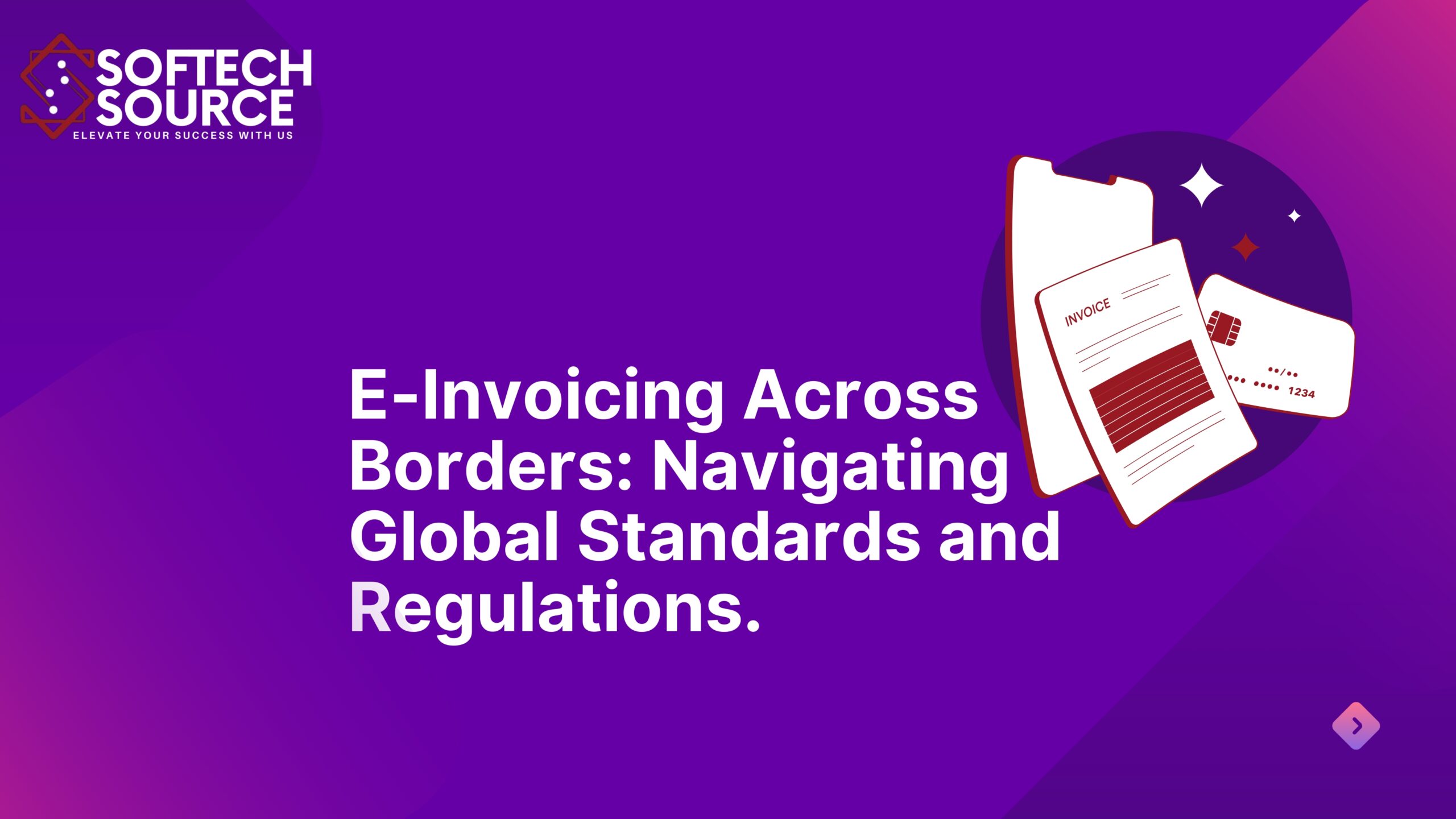In der heutigen vernetzten Welt sind Unternehmen nicht mehr durch nationale Grenzen begrenzt. Diese globale Reichweite gilt auch für Finanzgeschäfte, wobei sich die elektronische Rechnungsstellung zu einem wichtigen Instrument für Unternehmen entwickelt hat, die internationale Transaktionen abwickeln. Die Implementierung der elektronischen Rechnungsstellung in verschiedenen Ländern bringt jedoch aufgrund unterschiedlicher Standards und Vorschriften eine Reihe von Herausforderungen mit sich. Dieser Blog befasst sich mit diesen Herausforderungen und stellt Best Practices für eine effektive Navigation in der globalen E-Invoicing-Landschaft vor.
Die globale E-Invoicing-Landschaft
Unter elektronischer Rechnungsstellung (E-Invoicing) versteht man das Versenden und Empfangen von Rechnungen in einem digitalen Format. Sie bietet Effizienz, Genauigkeit und Kosteneinsparungen, was sie für Unternehmen jeder Größe attraktiv macht. Die Einführung der elektronischen Rechnungsstellung auf globaler Ebene erfordert jedoch eine komplexe Reihe von Standards und Vorschriften, die sich von Land zu Land unterscheiden.
Herausforderungen bei der weltweiten Einführung der elektronischen Rechnungsstellung
Unterschiedliche Standards und Formate
Die Herausforderung: Verschiedene Länder haben unterschiedliche E-Invoicing-Standards und -Formate eingeführt. So schreibt die Europäische Union beispielsweise die Verwendung der Europäischen Norm (EN) 16931 vor, während Regionen wie Lateinamerika ihre eigenen Anforderungen haben.
Die Lösung: Unternehmen müssen sich über die Standards in jedem Land, in dem sie tätig sind, auf dem Laufenden halten und in anpassungsfähige E-Invoicing-Lösungen investieren, die mehrere Formate unterstützen können.
Einhaltung gesetzlicher Vorschriften
Herausforderung: Jedes Land hat seine eigenen Vorschriften für die elektronische Rechnungsstellung, die von Datenschutzgesetzen bis zu steuerlichen Anforderungen reichen. So schreibt Brasilien beispielsweise vor, dass Rechnungen elektronisch signiert und an eine staatliche Datenbank übermittelt werden müssen, während in den USA die Vorschriften für die elektronische Rechnungsstellung weniger streng sind, aber dennoch je nach Bundesstaat variieren.
Die Lösung: Unternehmen sollten mit lokalen Experten oder Beratern zusammenarbeiten, die sich mit den Vorschriften des jeweiligen Marktes auskennen. Die Integration eines Compliance-Management-Systems in Ihre E-Invoicing-Plattform kann dazu beitragen, die Einhaltung dieser Vorschriften zu gewährleisten.
Bewährte Praktiken für die globale elektronische Rechnungsstellung
- Einführung einer flexiblen Lösung für die elektronische Rechnungsstellung
Praxis: Entscheiden Sie sich für eine E-Invoicing-Plattform, die verschiedene Standards und Formate unterstützt. Dank dieser Anpassungsfähigkeit können Sie verschiedene regionale Anforderungen erfüllen, ohne Ihr System grundlegend zu überarbeiten. - Bleiben Sie auf dem Laufenden über globale Vorschriften
Praxis: Verbessern Sie kontinuierlich Ihr Wissen über die weltweiten E-Invoicing-Vorschriften. Abonnieren Sie Branchen-Newsletter, treten Sie Berufsverbänden bei und nehmen Sie an Webinaren teil, um über alle Änderungen informiert zu bleiben. - Lokales Fachwissen nutzen
Praxis: Arbeiten Sie mit lokalen Experten oder Beratern zusammen, die sich mit den spezifischen E-Invoicing-Vorschriften des jeweiligen Landes gut auskennen. Ihr Wissen kann Sie durch ein komplexes regulatorisches Umfeld führen und Ihnen helfen, teure Fehler zu vermeiden. - Starkes Compliance Management einführen
Praxis: Integrieren Sie ein Compliance-Management-System in Ihre E-Invoicing-Lösung. Dieses System sollte automatisch angepasst werden, um gesetzliche Änderungen zu berücksichtigen und sicherzustellen, dass Ihre elektronischen Rechnungen den lokalen Anforderungen entsprechen. - Fokus auf Datensicherheit
Praxis: Machen Sie Datensicherheit zu einer Priorität, indem Sie Verschlüsselung und sichere Datenspeicherung verwenden und regelmäßige Sicherheitsaudits durchführen. Vergewissern Sie sich, dass Ihr E-Invoicing-Anbieter die internationalen Datenschutzstandards und -vorschriften einhält. - Optimieren Sie für die Integration
Praxis: Wählen Sie E-Invoicing-Lösungen, die eine reibungslose Integration mit verschiedenen lokalen Buchhaltungs- und ERP-Systemen ermöglichen. Dies wird Ihre Finanzprozesse verbessern und die Gesamteffizienz steigern.
Schlussfolgerung:
Die Navigation in der globalen E-Invoicing-Landschaft kann aufgrund der Vielzahl von Standards und Vorschriften eine große Herausforderung darstellen. Unternehmen können diese Probleme jedoch effektiv angehen, indem sie eine flexible Lösung für die elektronische Rechnungsstellung einführen, sich über Änderungen der Vorschriften auf dem Laufenden halten, lokales Fachwissen nutzen und der Einhaltung von Vorschriften und der Datensicherheit Vorrang einräumen. Durch die Befolgung dieser Best Practices können Unternehmen reibungslose grenzüberschreitende Transaktionen sicherstellen und sich für den Erfolg in einer globalen Wirtschaft positionieren. Indem sie sich diesen Herausforderungen direkt stellen und die richtigen Strategien anwenden, können Unternehmen die Vorteile der elektronischen Rechnungsstellung voll ausschöpfen und gleichzeitig die Einhaltung von Vorschriften und die Effizienz über internationale Grenzen hinweg sicherstellen.


